As bonsai evolved, designs that use the trunk, branches and surface roots in the most natural way became the art’s classic styles. In the transition from China to Japan, design became more clearly defined, emphasizing balance as well as beauty. This refinement of
bonsai styles was the result of pinching, pruning and wiring. In the dwarf trees he worked on, man reflected what he saw in the trees around him. The
art of bonsai continues to be refined even today.
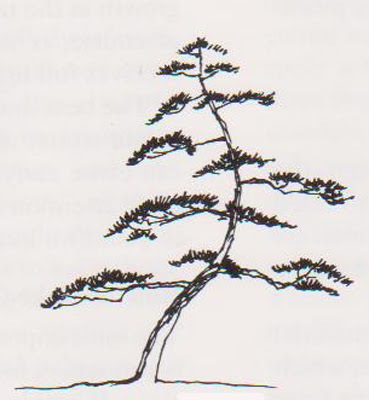 |
| Curved-Upright |
Design Your Bonsai
As many trees lend themselves to more than one style of bonsai, you have to decide how you want to design your tree. It is important to approach a tree to be worked on with an open mind, to look carefully at the trunk and branches. Every plant has its own character. The idea is to bring out the best tree from a certain piece of material. As our Japanese bonsai masters remind us, “
bend like the willow, not like the oak.”
In
creating bonsai you concentrate on the trunk and on the placement of branches. By doing this, you create an essential part of bonsai design – negative space, the space between the branches, the open area that allows “little birds to fly through”. In the finished design there should be a harmony between the parts of the tree and the open space.
There are many more
bonsai styles than those shown but the following should serve as models to inspire you to create trees with good balance and pleasing design. Viewing different styles should stimulate your creativeness and make you aware of the individual parts (the trunk, branches, etc.) that make up the whole tree. But thought established styles provide invaluable models, they do not tell the entire story of bonsai. At no time should you hesitate to design a bonsai just because it does not conform to an established style. Remember that a good bonsai is one that draws the viewer into the tree and reveals the wonder of nature.
Trees growing in nature are formed by the elements. Wind, storms and the need for light cause trunks to move from the straight, upright style. The following sketches remind us that trees adjust to the environment that nature has placed them in, be that environment gentle or harsh.
1.
Straight upright. The tip of the tree is directly over the base of the trunk. The tree has a well defined branch structure.
2.
Curved upright. The tip of the tree is over the base of the trunk. In between, the trunk has developed a long, gentle curve.
3.
Slanting upright. The tip of the tree has grown away from the base of the trunk and is over the soil mass. The tree must be stable and not appear about to tip over.
4.
Windswept. The leaning trunk, branches and foliage show the effect of constant wind.
5.
Semicascade. The tree has more slant than the slanting-upright trunk. Often the trunk extends across the pot, and slightly beyond the edge of the pot. The foliage may occur below the rim of the pot.
6.
Cascade. Think of this as a tree clinging to the side of a cliff. The trunk line is flowing downward. The
cascade bonsai should be put in a container specifically designed for that style of bonsai. The container represents the cliff from which the tree grows.
7.
Grove. An uneven number of trees are planted together.
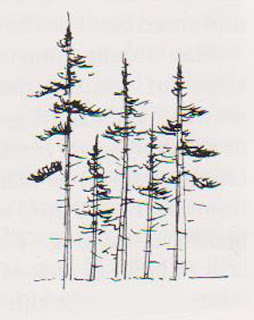 |
| Groove |
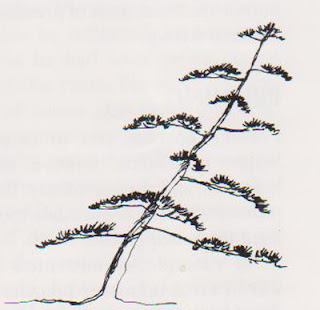 |
| Slanting-Upright |
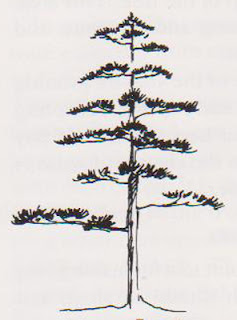 |
| Straight-Upright |
 |
| Cascade |
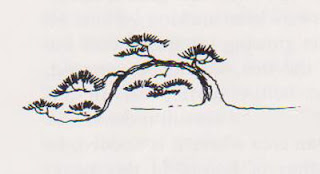 |
| Semicascade |
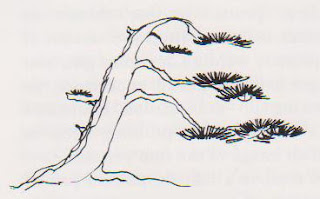 |
| Windswept |







Comments
Post a Comment